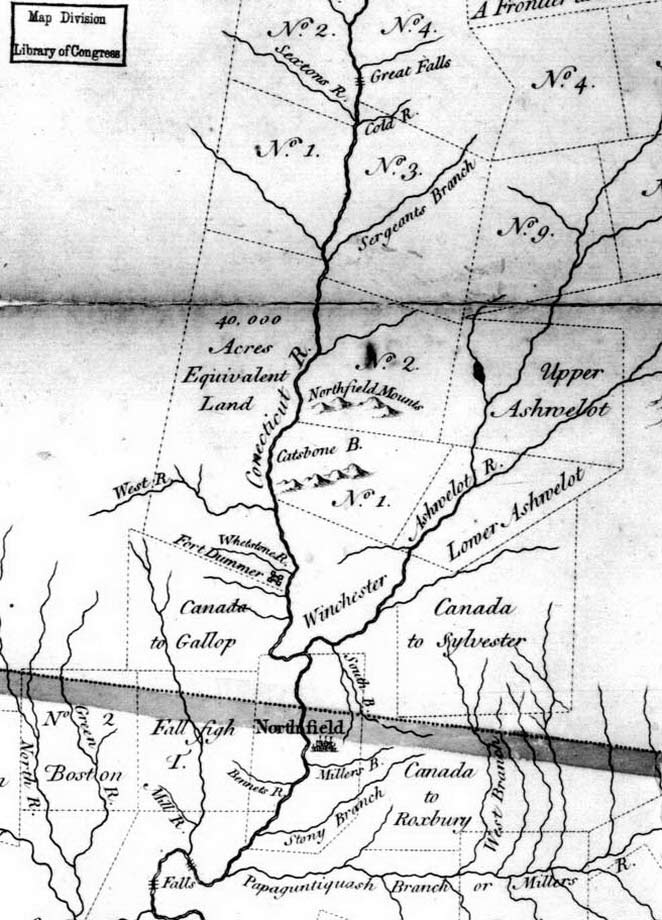Many Historians look at the actions of Benning Wentworth as blatant disregard for the rules [1]. According to historian Allen Raymond, these historians looking at history with a case of twenty-twenty hindsight [2]. Raymond urges us to look at the affair from the contemporary perspective of Governor Benning Wentworth himself. From the governor’s point of view, Fort Dummer provided evidence that New Hampshire actually did have land rights in what is now modern day Vermont. Fort Dummer, “which had been built and garrisoned by Massachusetts, but afterwards was supported at the joint expense of both provinces (MA and New Hampshire), as a mutual defense against the inroads of the savages, as the adjacent country, at the commencement of the war in 1754 (French and Indian War), was nearly wilderness” [3]. However, “the crucial point is not who maintained the fort, but the view of all three participants, Massachusetts, New Hampshire, and the Crown, that the outpost was on New Hampshire soil, that is the colony’s first solid claim west of the Connecticut” [4]. Raymond is correct, “the Province of New Hampshire – whose nearest population centers were many miles to the east over difficult routes – did not feel it should pay for a fort which protected mostly Massachusetts people in the Connecticut River valley [4]. However, King George ordered New Hampshire to pay for upkeep of Fort Dummer. In 1749 Benning Wentworth sent surveyors to make a map and gather some other facts about the fort” [5]. That year, Wentworth also began selling land grants west of the Connecticut River. From the point of view of Governor Bennington, responsibility for the upkeep of Fort Dummer gave New Hampshire legitimate claim to the lands west of the Connecticut.

Caption: If we look here on the map division that the Library of Congress provided, Fort Dummer can be seen directly west of the Connecticut River and right above the “Canada to Gallop.” We can see that if the Crown obligated up keep of the fort, then Benning would have conceived that as have claiming to the lands west of the Connecticut. (Old Maps)
Some historians view Benning as some kind of rebel without regard for rules, but we must also remember that Bennington was still an elected official of the Crown, therefore, he was bound by its authority. Furthermore, Wentworth was unaware that the New York Governor “claimed” the land west of the Connecticut until he already surveyed the area and began granting plots. It certainly seems more plausible that Bennington Wentworth believed that New Hampshire had claim to the land west of the Connecticut, rather than that he was bullheaded and deliberately granted land in an effort to steal territory away from New York.
Citations
- Allen R. Raymond, Bennington Wentworth’s Claims in the New Hampshire-New York Border Controversy: A Case of Twenty-Twenty Hindsight?. Vermont History, pg. 21, vol. 43, no. 1, 1975. Vermont Historical Society. Accessed March 28, 2017, http://vermonthistory.org/journal/misc/BenningWentworthsClaims.pdf.
- Ibid., 20/21
- Ira Allen, The Natural and Political History of the State of Vermont. London: J.W. Myers, NO. 2 Paternoster-Row, 1798. Reprint 1969. Japan: Tuttle Co., Inc., 18.
- Raymond, A Case of Twenty-Twenty Hindsight?, 23.
- Brattleboro History. 2 Equivalent Lands and Fort Dummer. Accessed March 28, 2017. http://www.vhist.com/vtbrattleboro/maps/2-equivalent-lands-and-fort-dummer/